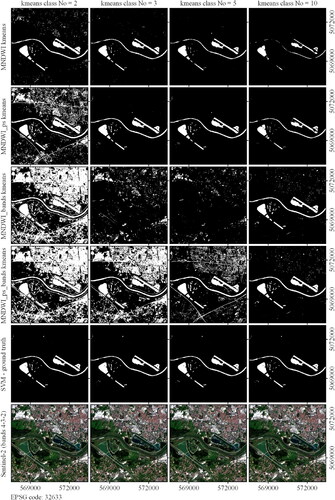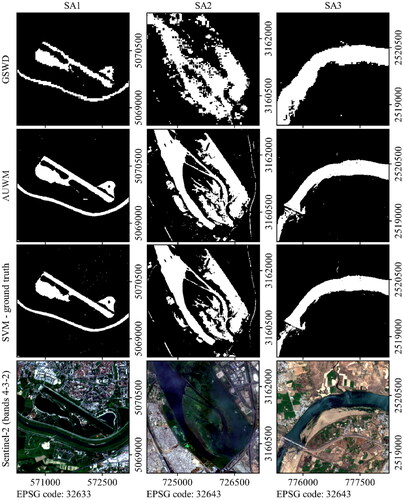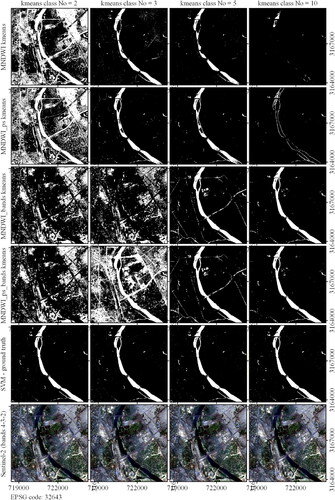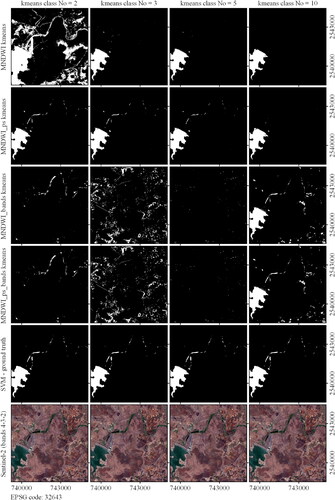Figures & data
Figure 1. (a) Geographic location of the study areas; (b) satellite image of the Zagreb, Croatia study area (SA1); (c) satellite image of the New Delhi, India study area (SA2); (d) satellite image of the Bhopal, Madhya Pradesh, India study area (SA3). All satellite images use the Sentinel-2 ‘true color’ composite (4–3–2).
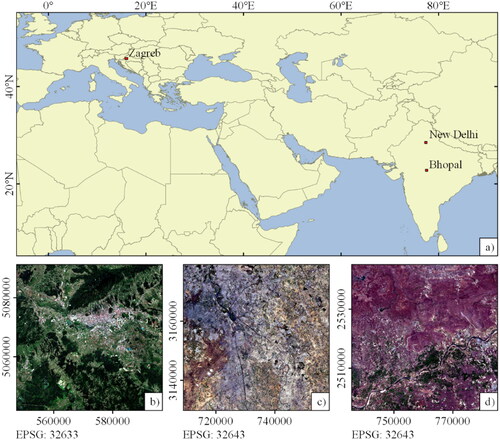
Table 1. Description of Sentinel-2 satellite imagery used in this research.
Figure 2. Statistical parameters for the accuracy assessments of the four variations in the AUWM calculated based on various numbers of k-means classes for SA1.
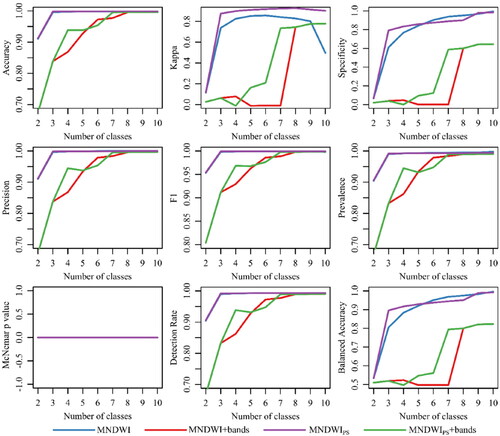
Figure 3. Statistical parameters for the accuracy assessment of the four variations in the AUWM calculated based on the various numbers of k-means classes for SA2.
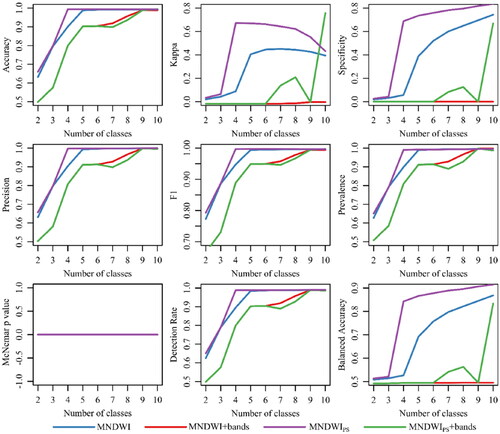
Figure 4. Statistical parameters for the accuracy assessment of the four variations in the AUWM calculated based on the various numbers of k-means classes for SA3.
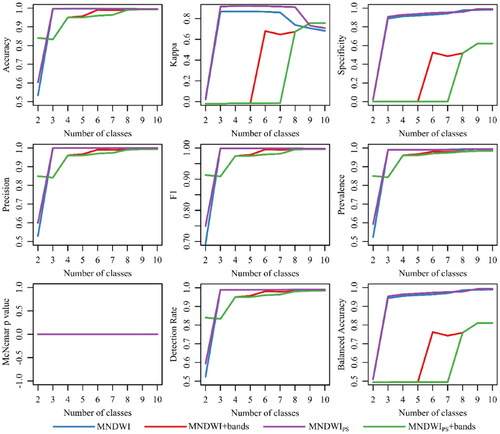
Figure 5. Processing time of the four variations in the AUWM, calculated based on the various numbers of k-means classes for (a) SA1, (b) SA2, (c) SA3, and (d) the average processing time of all three study areas.
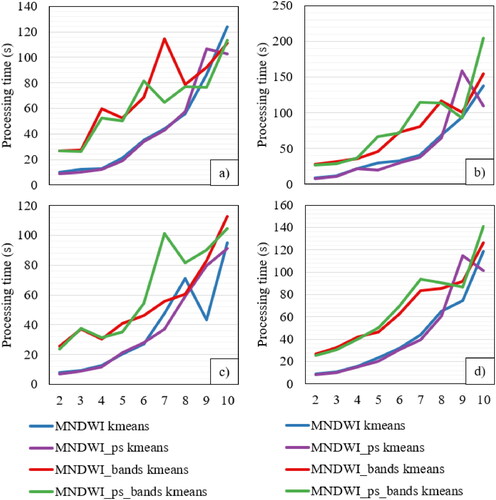
Table 2. Comparison of the statistical parameters and processing times for the MNDWIPS calculated based on the various numbers of k-means classes. Bolded values represent lowest processing time MNDWIPS with highest statistical parameters. Gray shaded column represents optimal number of classes for k-means for the MNDWIPS.
Figure 6. Statistical parameters for the accuracy assessment of the GSWD and AUWM calculated for all study areas.
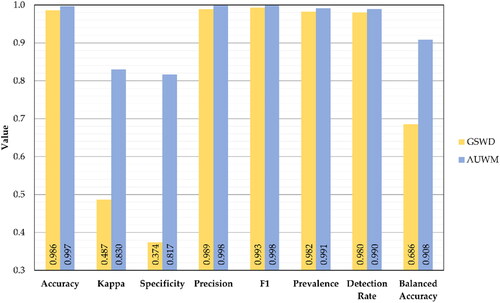
Figure 8. Surface water map for Croatia made using the AUWM. The enlarged subset (right) shows the area of Karlovac, known as the city situated on four rivers. Sentinel-2 ‘true color’ composite (4–3–2) was used for the comparison.
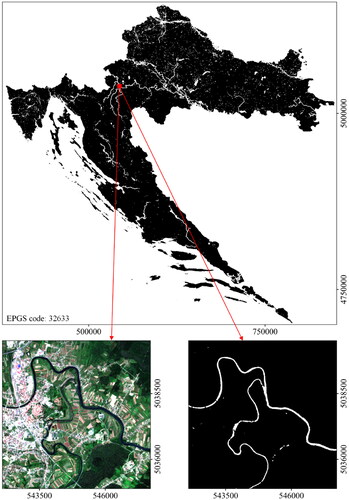
Figure A1. Visual analyses of the four variations in the AUWM, calculated based on the various numbers of k-means classes (2, 3, 5, and 10) for SA1.
